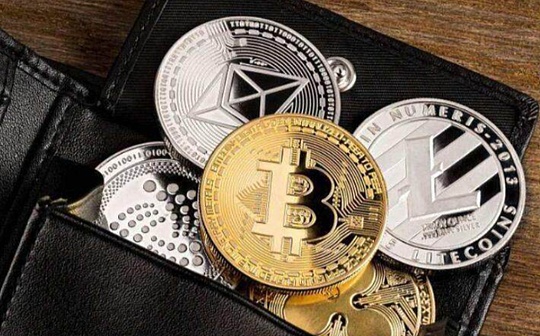China and the United States look at the encryption industry: The attitude towards CBDC is completely opposite. Bitcoin may be a key battlefield?

Reprinted from panewslab
01/26/2025·3M
Original text: Wu Tianyi , DeThings
On January 23, US President Donald Trump signed an executive order to promote the development of cryptocurrencies in the United States and work towards establishing a national digital asset reserve. Venture capitalist David Sacks, known as the "crypto czar", signed the order together with Trump.
“The digital asset industry plays a vital role in U.S. innovation and economic development, as well as our nation’s international leadership,” the order states.
According to CoinDesk, China is planning to replace the US dollar. China and Russia reduced their holdings of billions of dollars' worth of U.S. Treasury bonds while adding to their gold reserves. Countries including China, Iran and Russia are actively establishing parallel cross-border economic systems that will not only bring their neighbors into their orbit, but also allies with whom they have large trade exchanges.
At the same time, five departments including the People's Bank of China jointly issued the "Opinions on the Pilot Program of the Financial Sector in the Conditional Free Trade Pilot Zone (Hong Kong) to Align with International High Standards and Promote Institutional Opening". The document mentions "supporting mainland residents in the Guangdong-Hong Kong-Macao Greater Bay Area to purchase eligible investment products sold by Hong Kong and Macao financial institutions through Hong Kong and Macao financial institutions, and expanding the scope of participating institutions and the scope of eligible investment products." This policy may provide an opportunity for the potential development direction of the crypto-asset industry.
Is Bitcoin a key battleground?
Much of the executive order signed by Trump focuses on establishing cryptocurrency technology and rules and its development in the United States. One of the key elements is the creation of a working group to consider establishing a national digital asset reserve “that may come from cryptocurrencies lawfully seized by the federal government through law enforcement actions.”
The order also outlines other key priorities for the digital asset industry, including protecting individuals and private businesses using blockchain networks from “persecution.” The document details certain protections for developers and miners, stating that they should be able to freely "develop and deploy software" and "participate in mining and verification," a nod to the technical staff who protect the Bitcoin network.
The president also pledged to defend the rights of those who choose to take custody of their digital assets. This means they don’t rely on centralized entities like Coinbase to keep their coins, but instead use personal crypto wallets, which are sometimes not regulated by the IRS.
The order emphasizes promoting U.S. dollar sovereignty by supporting the development of globally legal, U.S. dollar-backed stablecoins.
CoinDesk said that U.S. policymakers are too narrowly focused on macroeconomic tools such as sanctions and promoting the dollar as a reserve currency. Today, the real battle is on smartphones and global currency markets. For example, more than half of businesses in Japan accept Alipay, while more than a third accept WeChat Pay.
China continues to pay attention to the United States’ Bitcoin-related policies. Wang Yongli, former deputy governor of the Bank of China, wrote in the first issue of "China Foreign Exchange" in 2025, "A Rational View of Trump's Bitcoin New Deal," in which he mentioned that Bitcoin highly imitates gold at the "coin" level, and its total volume and stages The new increment is completely set by the system, which is more stringent than gold (it is not clear how much actual gold reserves are). The amount that can be used for exchange transactions is more limited, and it cannot grow with the growth of the value of tradable wealth. It does not meet the essential requirements of currency. As Trump won the U.S. presidential election, his proposed Bitcoin New Deal received widespread attention and heated discussion. We need to calm down, view and grasp rationally and objectively, and avoid making subversive mistakes.
Previously, Zhou Xiaochuan, Vice Chairman of the Boao Forum for Asia and former Governor of the People's Bank of China, mentioned at the "Boao Forum for Asia New Year Outlook 2025" event that the world economic recovery in 2025 will be full of variables and the industrial chain will be forced to reshape. Global public debt is about to exceed 100 trillion US dollars, which will increase external financing costs and exchange rate depreciation pressure on emerging markets and developing countries. Debt poses challenges to the fiscal sustainability of developed countries. The impact of digital encrypted assets on global financial stability and financial security requires vigilance.
Regarding the "Opinions on the Financial Sector's Pilot Program in the Conditional Free Trade Pilot Zone (Hong Kong) to Align with International High Standards and Promote Institutional Opening" jointly issued by the People's Bank of China and other five departments, Liu Honglin, a lawyer at Mankiw Law Firm, said that with the Hong Kong SAR The government is actively exploring the regulation of virtual assets, such as the launch of virtual asset ETFs. It is worth looking forward to whether these products can be included in cross-border financial management in the future.
Combined with policy provisions, if Hong Kong’s crypto-asset products can provide investment channels for mainland investors through Wealth Management Connect, it will not only enrich the asset allocation choices of mainland residents, but also become an important tool to promote the internationalization of the RMB. Once the scope of cross-border financial management is further expanded, virtual asset ETFs or on-chain bonds may be the first to be piloted, opening the door to the financial application of the blockchain industry.
Different attitudes towards CBDC
It is worth mentioning that Trump’s executive order also prohibits the “establishment, issuance, circulation, and use” of U.S. central bank digital currencies (CBDC) , and requires the working group to study the possibility of establishing and maintaining a national cryptocurrency reserve and a regulatory framework for stablecoins. sex.
Ordering federal agencies to halt any potential CBDC development was one of Trump’s campaign promises to the crypto industry during his presidential campaign.
Geoff Kendrick, global head of digital asset research at Standard Chartered, told Cointelegraph: “CBDCs in the U.S. are dead under Trump. Instead, they are smuggling the private stablecoin route, and the Fed can’t do anything about it.” Government spokesman Brian Hughes "The Trump administration will give a seat to government officials who are committed to defending the rights of the American people, putting America first, and ensuring that working people's tax dollars are spent most effectively," he told Reuters.
The rhetoric fits with widespread Republican skepticism of government involvement in the financial industry and a desire to broadly deregulate the industry. Therefore, it is not surprising that CBDC is being targeted, as CBDC has been the subject of public privacy concerns.
Although some CBDC developers, such as the European Central Bank, say privacy is a top priority, few in the public seem to believe this, hampering CBDC efforts. According to CBDC Tracker, of the 169 CBDC projects currently underway, only 4 have been launched.
On the contrary, as of July 2024, the e-RMB application has attracted 180 million personal wallet users, and the cumulative transaction volume in the pilot areas has reached 7.3 trillion yuan (US$1 trillion). The mBridge project will enter the minimum viable product (MVP) stage in mid-2024. The project aims to explore a multi-central bank digital currency (CBDC) platform shared by participating central banks and commercial banks, built on distributed ledger technology (DLT), to enable instant cross-border payments and settlements.
The mBridge project is the result of extensive collaboration since 2021 between the Bank for International Settlements Innovation Center, the Bank of Thailand, the Central Bank of the United Arab Emirates, the Digital Currency Research Institute of the People's Bank of China and the Hong Kong Monetary Authority. The Saudi Central Bank will join in 2024.
In September 2024, Reuters stated that a total of 134 countries (accounting for 98% of the global economy) are currently exploring digital versions of their national currencies, with nearly half of them already at an advanced stage, while pioneer countries such as China, the Bahamas and Nigeria have Starting to see an uptick in usage. The use of electronic renminbi has increased nearly fourfold to 7 trillion yuan ($987 billion).
Research released by the U.S. Atlantic Council think tank on Tuesday showed that all G20 countries are currently studying central bank digital currency (CBDC), and a total of 44 countries are piloting it.
Peking University scholar Dong Zhiyong believes that the incentive mechanism of payment institutions is a challenge. Merchants do not need to pay fees to accept digital renminbi. Although this is a good thing for merchants, if it is not widely used, merchants will face additional administrative burdens, and they will not be able to obtain commissions from transactions and lack the motivation to join. Therefore, he suggested establishing a reasonable charging mechanism and exploring value-added services with payment institutions.
Additionally, he suggested creating an ecosystem for industrial and commercial use cases, as businesses have started using e-renminbi when processing large transactions despite low consumer acceptance. Administrative burdens on retailers are now being gradually addressed, with new "smart account splitting" applications being piloted to streamline accounting and reconciliation processes.



 chaincatcher
chaincatcher
 jinse
jinse